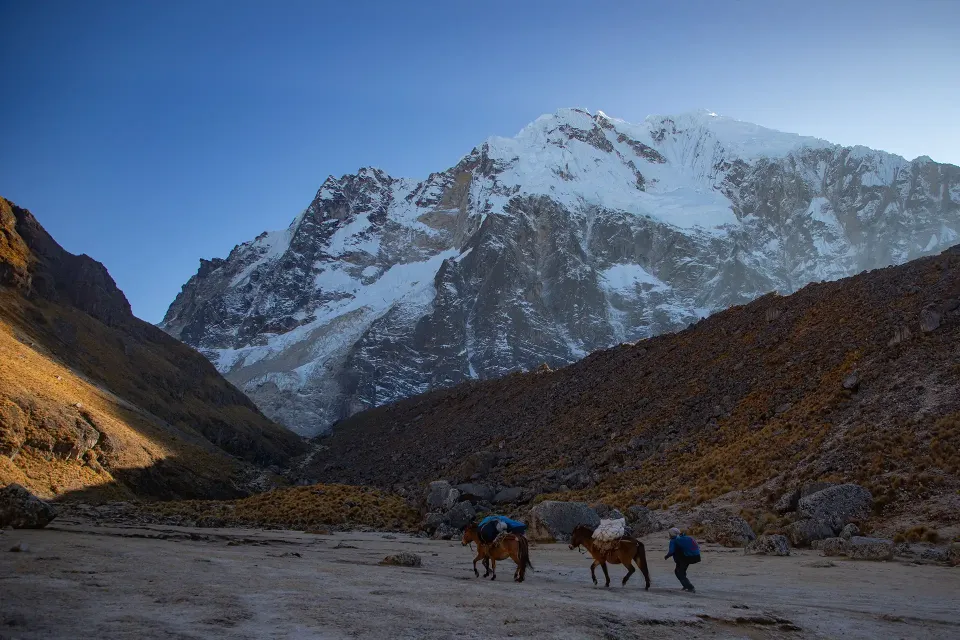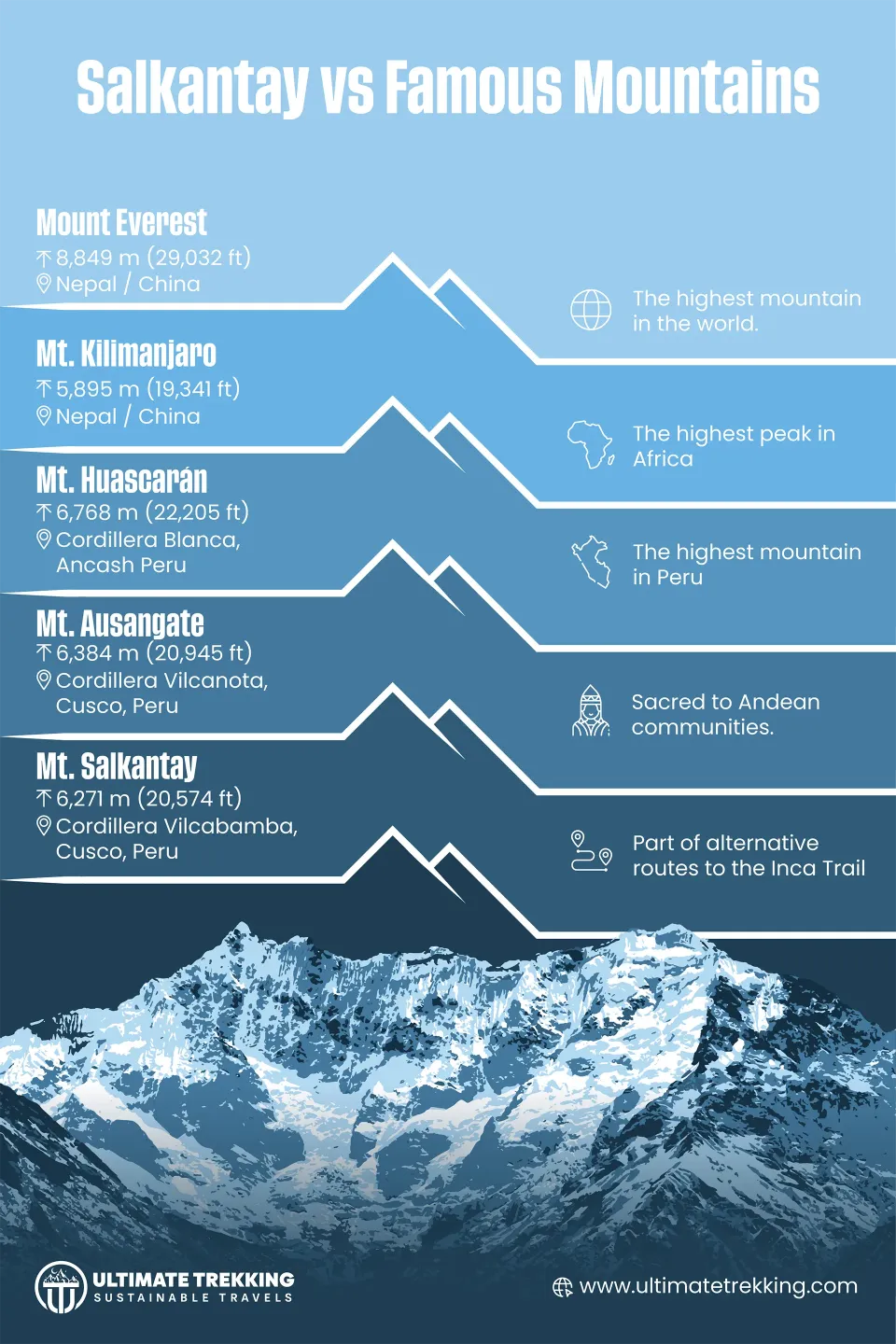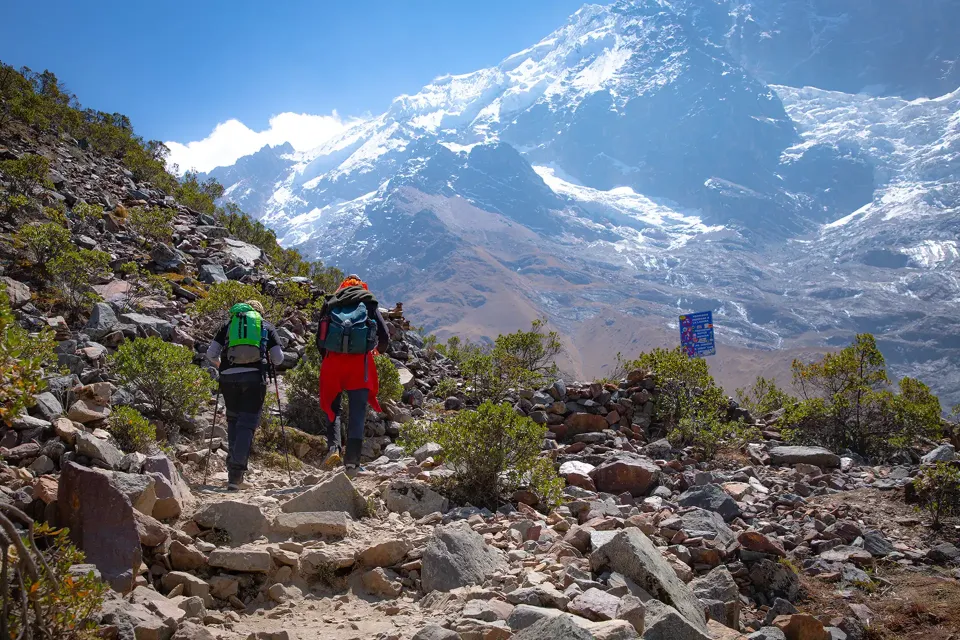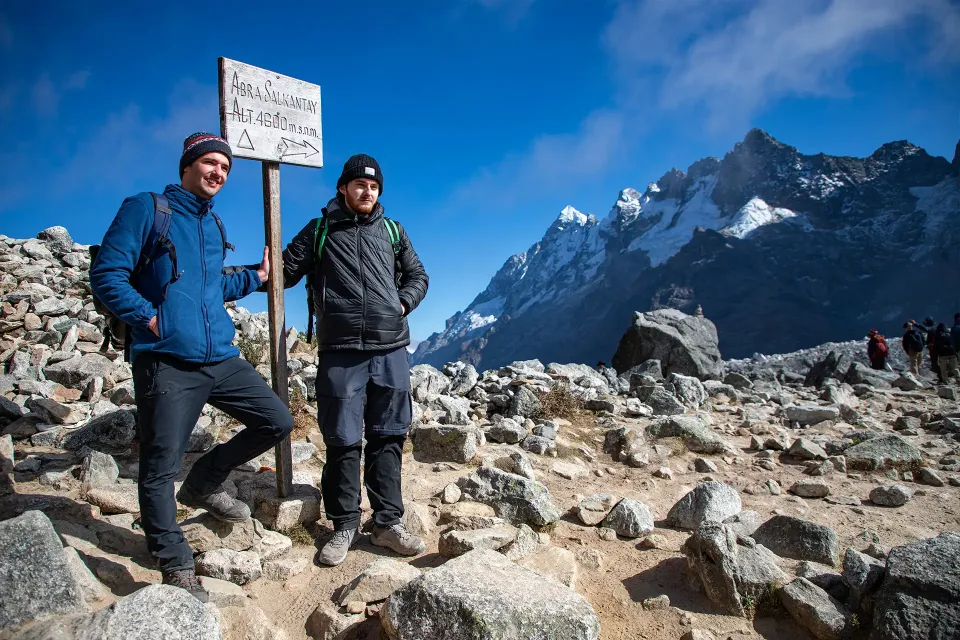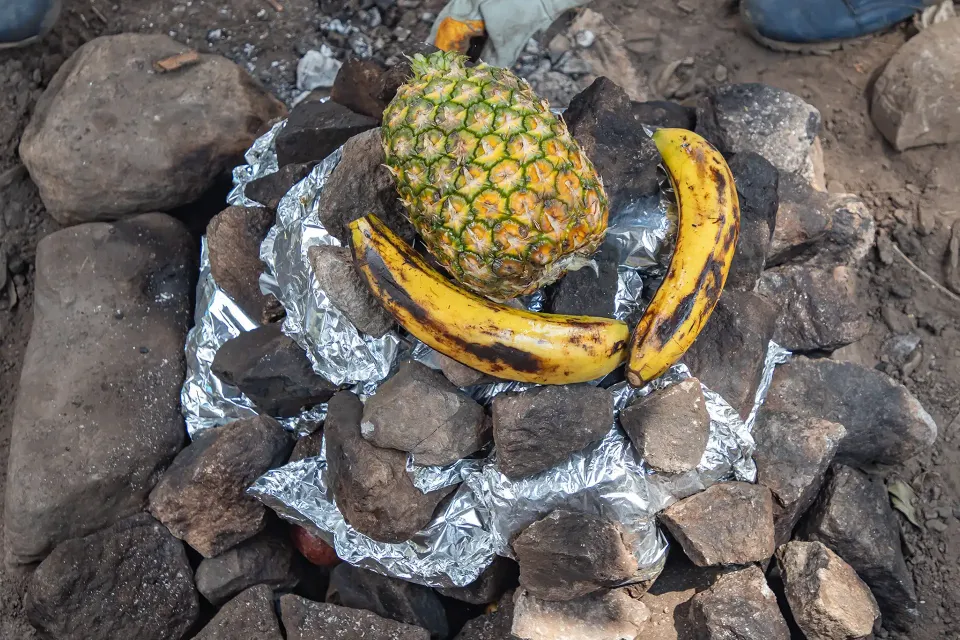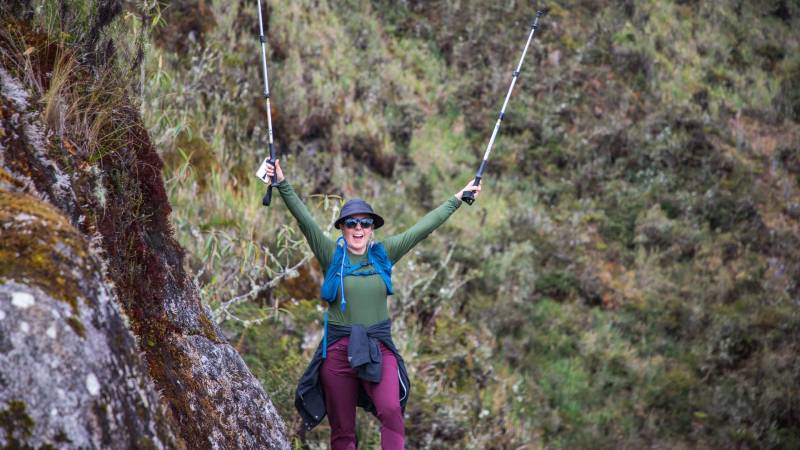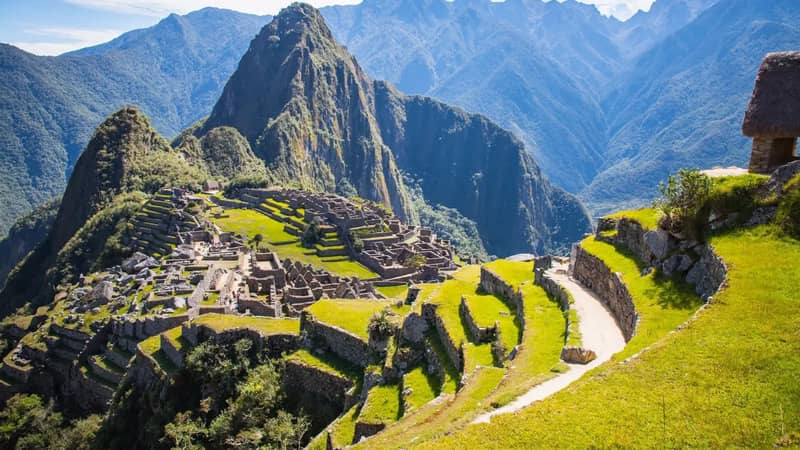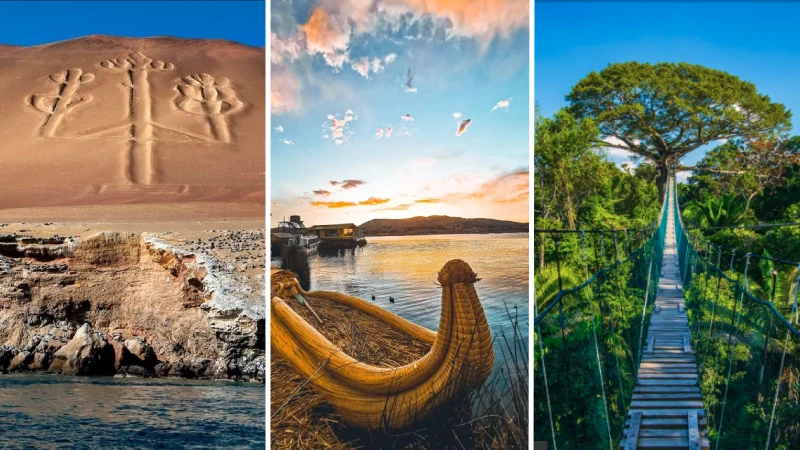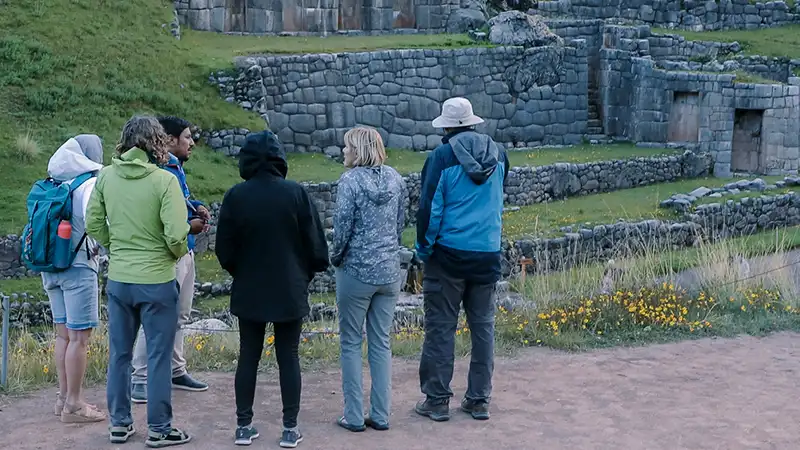Do you feel that the elevation of the Salkantay mountain could be your biggest obstacle? Here you will find out how to prevent altitude sickness and how to prepare yourself. You will also learn the difficulty of the hike each day, will it be difficult but will you be able to overcome it without any problem,
I promise you it will be worth the effort!
What You Need to Know About Salkantay Mountain
The Salkantay Mountain is at the top of the heart of the Andes. This mountain stands out as one of the 25 best treks in the world according to National Geographic Adventure Travel Magazine.
The sacred snow-capped Salkantay is seen as a protective symbol for the land and its native people. Today, it is recognized as a natural and cultural heritage site, shaped over thousands of years by nature. It offers you stunning landscapes and a deep cultural connection.
This mountain was the setting for important events, including ceremonies, sacrifices, and special offerings. Local people performed these rituals as part of their traditions. Salkantay is considered one of the main Apus (sacred mountains) of the Inca empire and one of the oldest in their history.
Even today, Apu Salkantay holds strong symbolic and religious value for the nearby communities.
Salkantay Mountain Elevation: The Facts
When you see it for the first time, its snowy peak seems to touch the sky.
Salkantay is located at an altitude of 6,271 meters above sea level, west of Cusco city, it stands as an important glacier in the Vilcabamba mountain range. You’ll find it in the southern part of the Aobamba valley basin.
To give you an idea, it is taller than the famous Huayna Picchu but smaller than giants like Huascarán. It is one of the tallest peaks in the Peruvian Andes.
Where Is Salkantay Located?
Salkantay Mountain is in the Vilcabamba Range, near Machu Picchu, in the Cusco region of Peru. It is located 60 km from the city of Cusco, within the Aobamba basin on the eastern slope of the Vilcabamba River.
The mountain holds deep symbolic importance and is tied to magical traditions and natural phenomena recognized by local people. For this reason, it is connected to the "upper world," believed to be the home of the gods.
Why Hiking Salkantay Mountain Should Be on Your List
The snowy peaks of Salkantay Mountain are the iconic highlight of the famous Salkantay Trek. You’ll also enjoy turquoise lagoons and green valleys—landscapes so beautiful you’ll wish you could frame them.
If you seek a spiritual connection to the Andes, this mountain is an Apu (sacred deity) deeply respected by locals. You’ll also learn about Andean traditions and beliefs, adding a unique meaning to your trek.
The challenge draws trekking enthusiasts like you. High altitudes and steep climbs will test your limits. But your reward will be the breathtaking views waiting at the summit.
Neither its snow-capped peaks, nor its valleys, nor its breathtaking views, nor its natural beauty can be compared to any other trekking. The only tour that can give it a fight is the Classic Inca Trail trek. The salkantay trek vs. inca trail have divided opinions on which one to choose as their preferred route. What is extraordinary is that both take you to the citadel of Machu Picchu.
To embark on a hike to the Salkantay mountain is to encounter a world untouched by time. Where ancient trails will be waiting for you. You will go through challenging terrains where you will need to know some important aspects before trekking. For example you need to know when is the best time, what is the altitude, what you have to carry or have knowledge of the map to the Salkantay Mountain.
What is Salkantay Mountain?
Salkantay is one of the highest snow-capped mountains in Peru. It is located in the Cordillera de Vilcabamba, in the department of Cusco, between the districts of Santa Teresa, Limatambo and Machu Picchu.
Did you Know: Salcantay or Salkantay comes from the Quechua Sallqantay. Its name is a contraction of Salqa, which means wild, and Antay, which means sky or avalanches. But if we add the word Apu (from the Quechua word meaning lord), it is defined as Apu Salkantay.
That is, where the spirits dwell. Apu is generally said to the great mountains of the Andean zones of Peru.
Facts About its History
- The Incas venerated the Salkantay mountain because they considered it as a protective deity. They also believed that the deity could control the weather and fertility in part of the Cusco region.
- The Salkantay mountain could be seen from the sundial in Machu Picchu. That is why the Incas considered it as one of the main deities.
- The first time someone tried to reach the top of the mountain was in 1950. Where an Italian expedition reached near the southeast face at 5600 m (18,373).
- In 1952 two people gave up but the other members of the team reached the summit. A French-American group were the first to reach the summit successfully.
- Luis Crispin reached the top of the mountain in 2013. And he is recognized as the first Peruvian to reach the summit. Nathan Heald and Thomas Ruyan, two Americans, accompanied the Peruvian.
- On July 31, 2013, Nathan Heald climbed the summit again with another group formed by James Lissy (USA).
How to Face Salkantay Altitude
When you climb to a high altitude, the air pressure drops, and your body gets less oxygen. Breathing can become harder, and it’s a challenge for your body.
You might feel symptoms of altitude sickness, such as headaches, dizziness, or extreme fatigue.
To prevent this:
- Spend one or two days in Cusco to acclimate before your trek. You can do city tour and visit coricancha, sacsayhuaman and more.
- Stay hydrated.
- Avoid heavy meals before starting the hike.
- Drink coca tea to help your body adapt.
Remember: your body needs time to adjust the altitude. Take it slow—every step matters.
How Does the Weather Impact Your Trek?
During the trek, you’ll notice two distinct climates. In the Mollepata valley, the weather is mild and humid. As you climb toward the snowy peak, it changes to dry and cold. Daytime temperatures reach about 20°C, while nighttime can drop to 0°C.
- Rainy Season: Rain falls from September to April.
- Dry Season: From May to August, there’s little to no rain. Daytime temperatures reach 17°C, and nights drop to around 7°C.
Is the Salkantay Trek Right for You?
How Difficult Is the Salkantay Trek?
If you have already decided to do the Salkantay Trek you should know that it is not difficult, but not easy either. The trek lasts between 4 and 5 days, with 6 to 9 hours a day. The trek has steep ascents, especially in the Salkantay pass.
- The first day you will walk through valleys and visit the Humantay Lagoon (4,200m.a.s.l.). The hike will be 7 to 8 hours with a moderate difficulty.
- The next day, the biggest challenge awaits you. You will climb the Salkantay Pass which is at 4,630 m.a.s.l. the highest point of the trek. Here you will enjoy unique views of the mountain. You will walk for 9 hours with a challenging difficulty.
- On the third day, you will hike through the cloud forest and then enjoy a traditional Andean Pachamanca lunch. You will also visit an organic coffee farm. It is a 6 hour hike and the difficulty is moderate.
- On the last day you will find the great reward of reaching Machu Picchu, where you can explore for 2 to 3 hours. It is a 4 hour hike and the difficulty is easy.
You need some hiking experience and a good physical condition. But, above all, you need determination. Each step to the top is a personal victory. It is also advisable to do it with an authorized company like Ultimate Trekking.
Is It Dangerous to Hike Salkantay?
The terrain on the Salkantay Trek changes depending on the season. In some areas, you might find slippery or unstable paths. To prepare for this, you need the right gear, including sturdy boots, trekking poles, and clothing for varying weather conditions. Altitude sickness can also be a risk if you don’t follow the proper recommendations.
Planning is crucial, so choosing a trusted company to guide you will reduce risks and ensure a safer experience. With preparation and care, you’ll fully enjoy this unforgettable adventure.
Tips You Need to Know
Packing Essentials for Salkantay
- Keep passports, student ID, or original and updated ID card handy.
- Trekking shoes.
- Waterproof jacket or windbreaker and a rain poncho.
- Wide-brimmed hat and gloves.
- Extra quick-drying clothes.
- Comfortable clothing.
- Sunscreen or sunblock.
- Insect repellent.
- Personal hygiene items and hand sanitizer (alcohol gel).
- Personal first-aid kit with basic medications.
- Camera and camcorder.
- Flashlight with batteries.
Best Times to Visit Salkantay Mountain
The best time to hike is from May to September. During these months, the weather stays stable, and the sky is clear. Wear layered clothes, a waterproof jacket, and water-resistant boots.
The best months to explore Salkantay are April, May, September, and October. Fewer tourists visit during these times. You’ll enjoy good weather with little rain and beautiful views.
FAQs
Can Beginners Hike the Salkantay Trek?
Yes, you’ll need some physical preparation. This means doing shorter hikes first. Walk regularly before your trip and practice with heavy backpacks.
How Do You Prepare for High Altitude Trekking?
Get used to the altitude in Cusco first. You can take a city tour and discover amazing places like Coricancha, Sacsayhuamán, the 12-angle stone, and more. Cusco was the capital of the Inca Empire. It's also important to stay hydrated.
What Makes Salkantay Different from the Inca Trail?
Both the Inca Trail and the Salkantay Trek offer amazing views, but they are very different. The Inca Trail has more jungle, while the Salkantay Trek takes you to higher mountains. Also, the Salkantay Trek has fewer people, as the Inca Trail is more famous.

